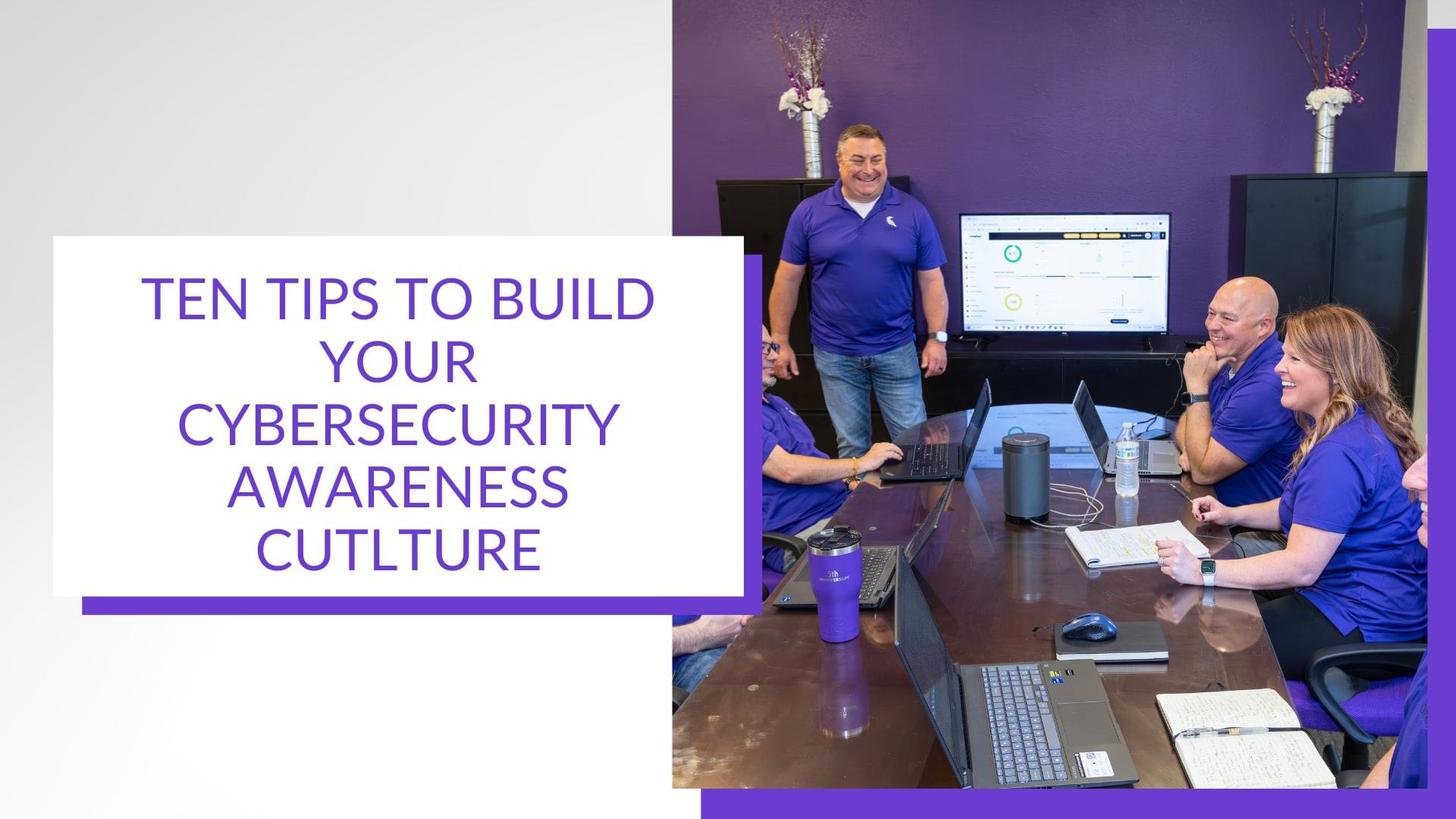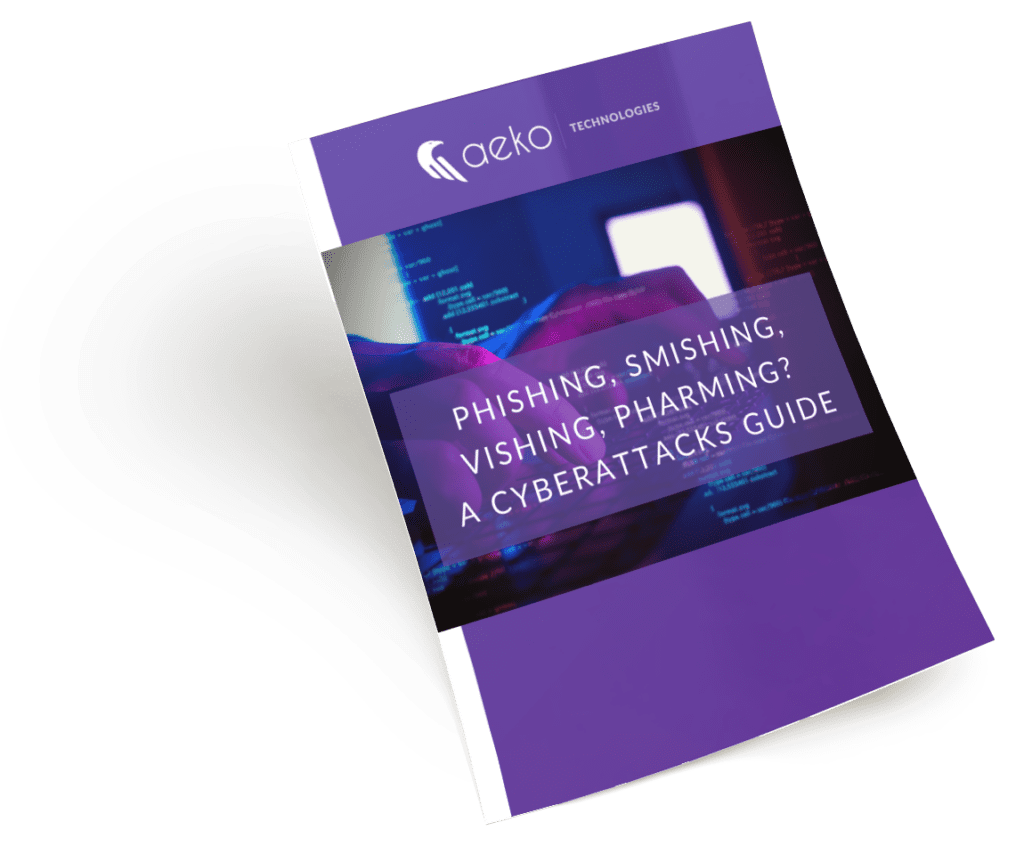From phishing emails to data breaches to malware downloads, cybersecurity breaches are a constant threat. Unfortunately, they can cripple businesses and devastate personal lives. One way threats get introduced into your organization’s network? Employees; either by accident or intentionally. Most of the time, the criminals are able to sneak in because an employee took some action accidentally. A lack of cybersecurity awareness culture is generally the culprit.
Luckily for us, mistakes like clicking a phishing link or using weak passwords are preventable. When you have a strong culture of cybersecurity awareness, your risk will be reduced significantly.
Why Culture Matters
Your organization’s cybersecurity should be thought of as a chain. When your links are strong, the chain is unbreakable. However, a weak link will make the chain vulnerable. In the case of cybersecurity, your team members can be the weak link in your chain. When you foster a cybersecurity awareness culture, every employee will be a strong link, making your organization more secure.
Easy Steps, Big Impact
The process of building a cybersecurity awareness culture doesn’t require a complex strategy or expensive training programs. You can make a big difference by following these simple steps:
1. Start With Leadership Buy-in
IT shouldn’t handle your cybersecurity issues alone, leadership should also be involved. When an executive champions cyber awareness it will send a powerful message to the rest of the organization. These are some of the ways a leadership team member can show their commitment:
- Participating in training sessions
- Speaking at security awareness events
- Allocating resources for ongoing initiatives
2. Make Security Awareness Fun, Not Fearful
Instead of the typical boring, dry training, make sure to use engaging videos, gamified quizzes and other real-life scenarios. This will help keep your team members interested in what they are learning. We highly suggest that every module is interactive. Here are some ideas:
- Have employees choose their path through a simulated phishing attack.
- Use short animated videos.
- Ensure complex topics are explained in a clear and relatable way.
3. Speak Their Language
Avoid jargon in favor of communicating in plain, easy-to-understand language. Some people might not understand what multi-factor authentication means. In this instance, you would explain that it adds another layer of security when logging in and it generates a code to gain access that works along with your password.
4. Keep It Short and Sweet
Let’s face it, nobody likes to sit through lengthy training sessions. By the end of them, you can hardly remember what was talked about in the beginning. Opt for bite-sized training sessions that are easy to digest and remember. You know the attention span of your employees best, but we suggest capping it at 20 minutes max. By using microlearning, you’ll keep employees engaged.
5. Conduct Phishing Drills
One of the best ways to learn is by using a hands-on approach. Regular phishing drills test your team members’ awareness and preparedness. Send phony phishing emails and track who on your team clicks the link or attachment. Use these results to educate your employees on red flags and reporting suspicious messages. We suggest you highlight the telltale signs that the email was fake.
6. Make Reporting Easy and Encouraged
Your team members need to feel comfortable in reporting suspicious activity without the fear of blame. Create a safe reporting system and acknowledge them directly. Here are a few ways you can do this:
- A dedicated email address
- An anonymous reporting hotline
- A designated security champion employees can approach directly
7. Security Champions: Empower Your Employees
Do you have an enthusiastic team member? Make them your “security champion.” This champion can help boost your cybersecurity awareness culture by answering questions from peers and promoting best practices to keep security awareness top of mind. Your champion will be a valuable resource who fosters a sense of shared responsibility for cybersecurity within your organization.
8. Beyond Work: Security Spills Over
Cybersecurity issues don’t just happen in the working world, cyber attacks and scams happen all the time in our personal lives. Educate your employees on steps to protect themselves at home like using strong passwords, choosing secure Wi-Fi connections, using cell phones safely and avoiding public hotspots.
There are two reasons to emphasize personal cybersecurity. This first is that employees who practice good security habits at home are more likely to do it in the workplace. Secondly, by starting with how to protect themselves and their families, they are more likely to be interested in future security training.
9. Celebrate Success
Recognize and celebrate your team member’s achievements in cybersecurity. If someone reported a suspicious email or your whole team had a low click-through rate on a phishing drill, celebrate it! When motivation for a strong cybersecurity awareness culture stays high, it will help reinforce continued vigilance.
10. Bonus Tip: Leverage Technology
Technology is a powerful tool for building a strong cybersecurity awareness culture. There are online training platforms that offer microlearning modules and track your employees’ progress. You can also schedule automated phishing simulations to keep your employees on their toes. Remember: Don’t do it on a regular schedule like the first Tuesday of every month. Make the simulations random in both number of emails and frequency.
Here are other tools to boost your employee’s security:
- Automated rules, such as Microsoft’s Sensitivity Labels
- DNS filtering
- Password managers
- Email filtering for spam and phishing
The Bottom Line: Everyone Plays a Role
Building a culture of cyber awareness is an ongoing process. Repetition is key! Regularly revisit these steps. Keep the conversation going. Make security awareness a natural part of your organization’s DNA.
Cybersecurity is a shared responsibility and by fostering a cybersecurity awareness culture, your business will benefit. Need a little help boosting your cybersecurity efforts? Book a meeting with our cybersecurity experts today.
Are you aware of the most common cyberattack methods?
Did you know there are over 3.4 billion phishing emails sent every day? Phishing and other cybercriminal behavior are a lot more common than you’d think.
Our free “Phishing, Smishing, Vishing, Pharming? A Cyberattacks Guide” will inform you about cyberattack methods and give you the latest in data security tips.


